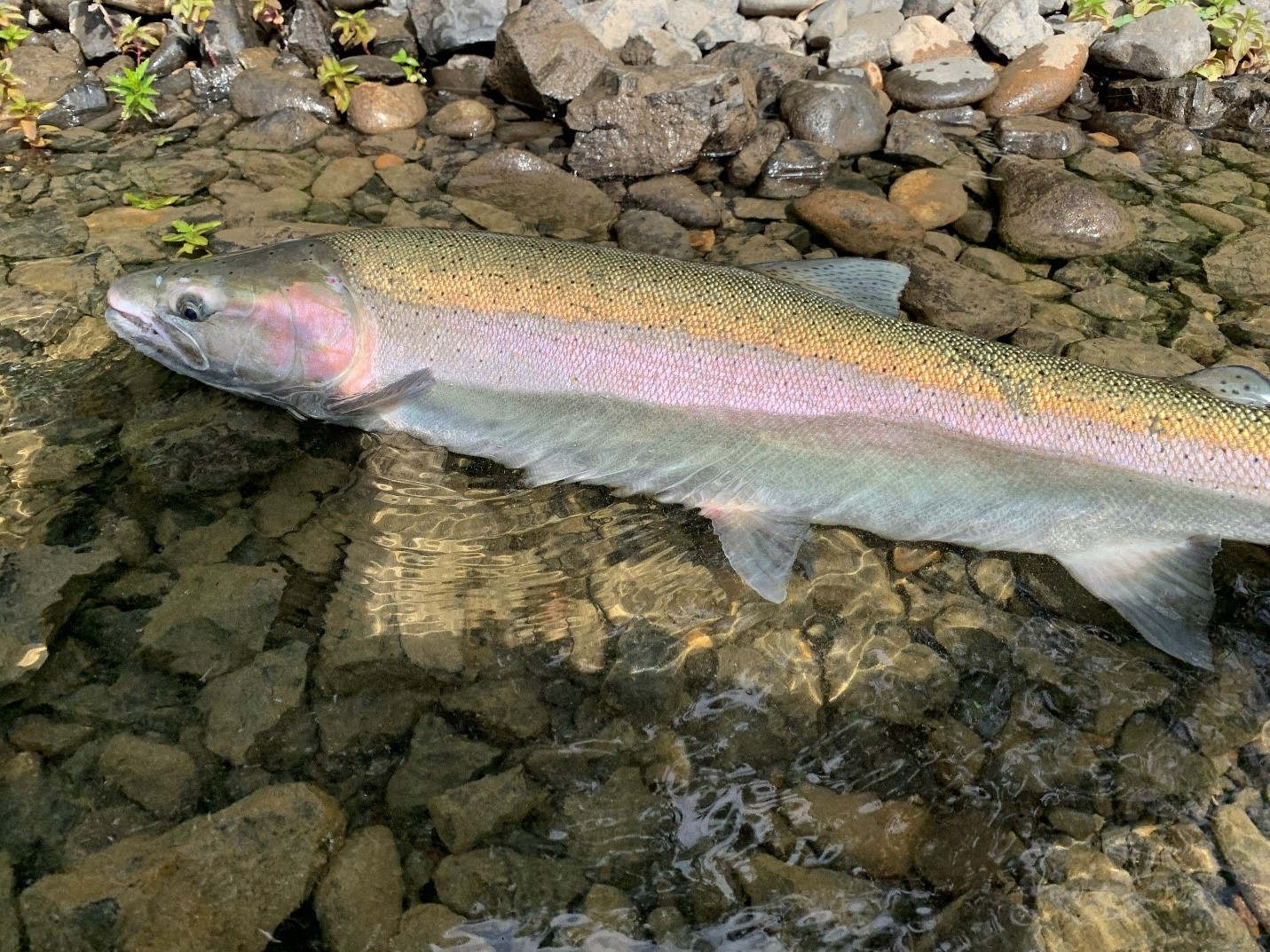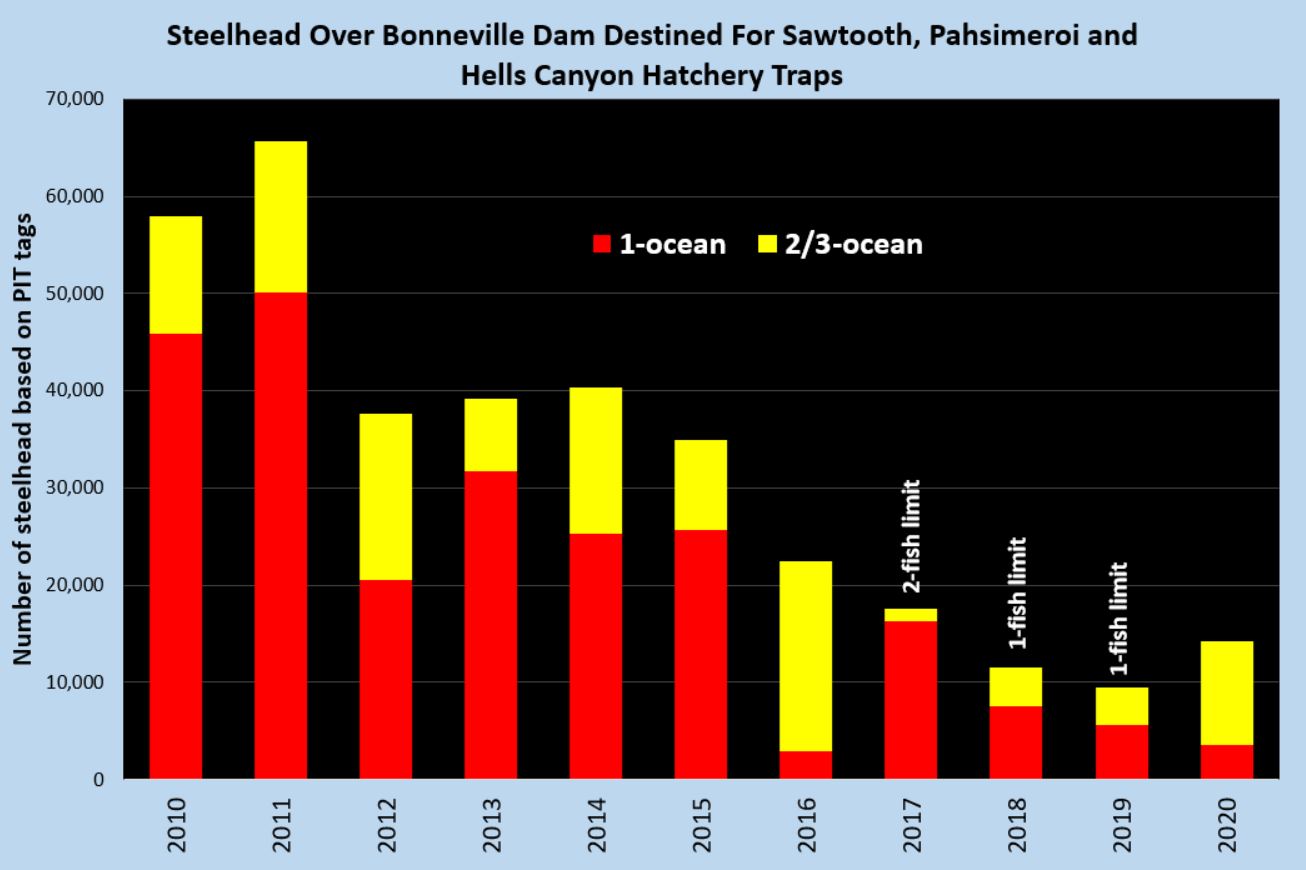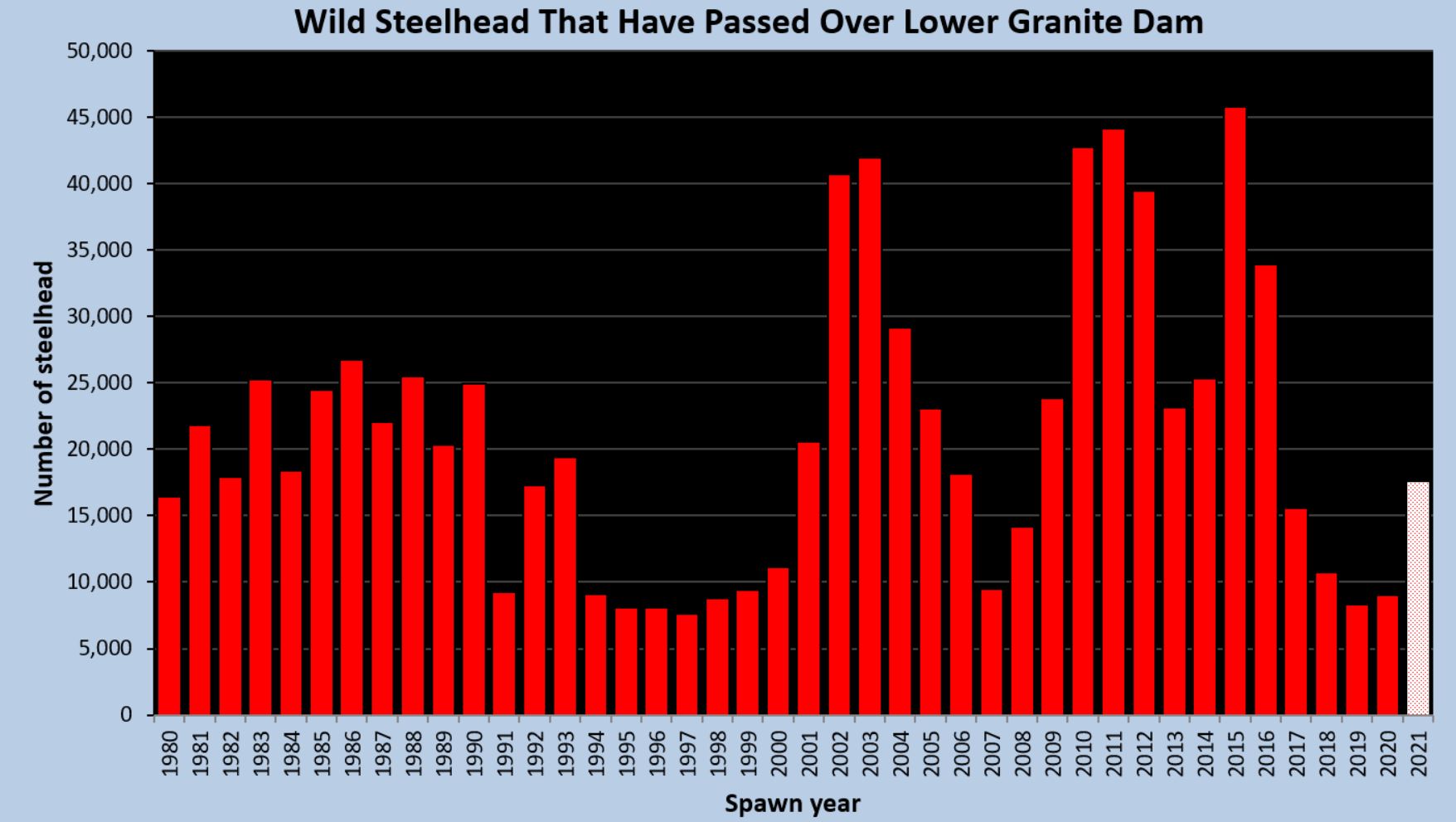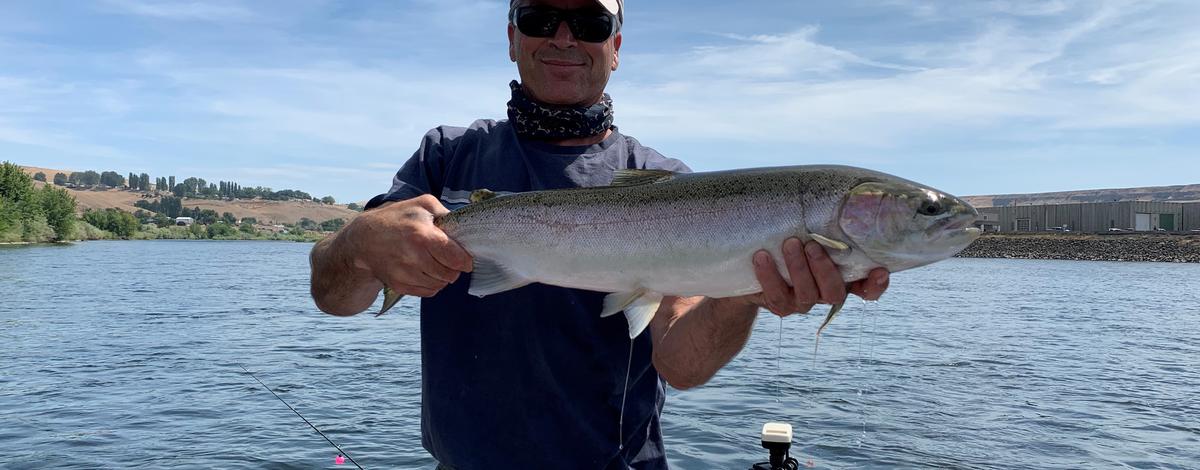IDAHO’S STEELHEAD UPDATE
August 21, 2020
By Joe DuPont

Hi everybody. I know many people plan their time off to steelhead fish in Idaho and have been eagerly waiting to hear what Idaho’s steelhead run is going to be like this year. Well, wait no longer, I have some information to share with you.
I typically like to wait until around mid-August before I give my first steelhead update. By this time, more than half the hatchery steelhead run destined for the Salmon and Snake rivers have typically passed over Bonneville Dam giving us a good idea of what these returns will ultimately be like. For those of you who are interested in the Clearwater River run, you will have to wait because these fish are just starting to pass over Bonneville Dam, and it won’t be until mid-September until we have a good feel for what this return will be like.
When we evaluate Idaho’s hatchery returns to the Salmon and Snake rivers we like to look closely at how many fish are returning to the Sawtooth, Pahsimeroi, and Hells Canyon hatchery traps. That is because this is where all the broodstock are collected that are used to fill our hatcheries and provide smolts to be released throughout the Salmon and Snake rivers in the future. If it looks like steelhead returns to these locations will be low, it may be necessary to implement more restrictive seasons or limits to ensure we will make our broodstock goals. The figure below summarizes the number (based on PIT tag detections) of steelhead destined for these traps that have passed over Bonneville Dam since 2010. The red portion of each bar shows how many of the returning fish spent one year in the ocean and the yellow portion shows how many spent two or three years in the ocean before returning as an adult. The bars presented for 2020 shows how many of these steelhead we a projecting to pass over Bonneville Dam this year. You will notice that this forecast is better than what we seen the past two years, but it is still a long way off from what we would consider to be a “good” return. If you were wondering, about 70% of the Idaho’s Salmon and Snake rivers hatchery steelhead are destined for one of these trap locations.

In Idaho, we typically open the steelhead harvest season in the Snake and Salmon rivers on September 1 and allow a daily harvest of three fish. As you can see from the graph above, due to low returns the previous three years, we implemented more restrictive rules (1 or 2-fish daily limits) to help ensure we would meet broodstock goals. In all three years, we were successful in meeting out broodstock goals, although last year we cut it close. If you compare this year’s projected return to the previous three years you will see it falls in between the 2017 (2-fish limit) and 2018 (1-fish limit) returns. What is very different this year from these past three years is 75% of the returning steelhead spent two or three years in the ocean. The good thing about this is these fish are bigger and the females will have more eggs. This means it doesn’t take as much broodstock to reach our hatchery goals as in normal years when typically only one-third of the fish spend two or three years in the ocean.
Another thing we pay close attention to is the status of our wild steelhead returns. If you look at the graph below, you will see that this year we are forecasting that around 17,000 wild steelhead will pass over Lower Granite Dam. Although we would like to see more, this forecast is better than we have seen the previous four years which is a good sign. With this wild steelhead forecast, impacts from our sport fisheries will not be an issue.

Based on this information, IDFG fisheries managers developed a proposal to reduce the daily limit to two fish in the Snake, Salmon and Little Salmon rivers for our Commission to consider. The Commission agreed with our assessment of these fisheries and approved our proposal to reduce the daily limit of steelhead in the Snake and Salmon rivers to two fish starting September 1. For more details on the steelhead season and rules, please refer to the IDFG webpage steelhead seasons and rules.
No efforts were made to adjust the steelhead season and limits in the Clearwater River and its tributaries because, at this point, there is too much uncertainty with how this return will end up. As I indicated earlier, we won’t have a good feel for this return until around mid-September. As such, the season in limits in the Clearwater River should not change until at least then.
Before I sign off, I wanted to talk a little more about the data in the first graph as there are some interesting things I want to point out to you. As I indicated earlier, about 75% of the return to the Snake and Salmon rivers are 2/3-ocean fish (almost all were 2-ocean fish). This is unusual as typically about two-thirds of the steelhead that return to these rivers are 1-ocean fish. This unexpected increase in 2/3-ocean fish was a huge boost because without it we would likely have had to make some serious cuts to our seasons or limits. What is even more unusual is that this is the first time (since PIT tags have been used) that we have seen more 2-ocean fish return than 1-ocean fish that returned the previous year (2019 in this case). All these fish migrated to the ocean on the same year (2018), and faced the same migratory and early ocean conditions. This has us wondering what could have caused more to return as 2-ocean fish. It could be that many of these fish didn’t reach large enough size their first year in the ocean to trigger a signal for them to return, and they remained another year in the ocean. It could be that survival for those fish spending their second year in the ocean was unusually good. Or, it could be something else. My hopes are that whatever caused this will also affect our Clearwater steelhead in the same way - there is always room to hope.
For those who like to fish the Clearwater River, stay tuned, as I will be providing an update on this fishery sometime in September.
Take care everybody.

